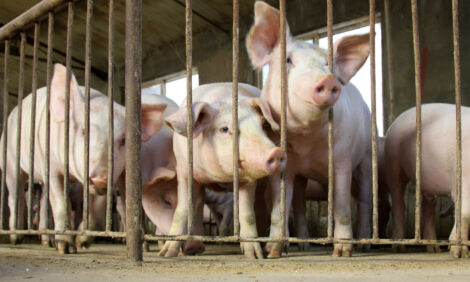



Berkshire a Triticale Treat for Pigs
AUSTRALIA - To encourage the 2010 growing of Berkshire, the new high yielding triticale, meetings of triticale growers, agronomists, pork producers and feed mills were recently hosted by Australia’s Pork Cooperative Research Centre (CRC), co-developer of the variety with The University of Sydney and the Grains Research and Development Corporation.Berkshire was one of three new grain varieties from Pork CRC plant breeding projects released for commercial sowing during the 2009 season and now available for extensive release. The others were the field pea, Maki and the barley, Shepherd.
Berkshire seminar attendees were told by Pork CRC Program One Manager, Dr Ray King, that, at an average digestible energy (DE) content of 13.9 MJ DE/kg, Berkshire contained about 0.5 MJ DE/kg more than the average energy in other triticale varieties, including Tahara.
“The higher DE content of Berkshire was confirmed by AusScan feed analysis on samples of Berkshire collected from around Australia during the current 2009/10 harvest, making it similar to the ‘average’ wheat,“ Dr King explained.
The revolutionary AusScan technology, released by the Pork CRC last year, predicts DE content with an accuracy of ± 0.27 MJ/kg and is now available from major Australian feed testing laboratories, according to Stock Journal.
Dr King urged pork producers and feed suppliers to routinely analyse grain to assist in purchasing decisions and to adjust their feed formulations to maximise productivity.
There is considerable variation in the nutrient value of grains, according to Dr King, with energy values varying by up to 4 MJ DE/kg within a cereal grain.
Following a limited release last year through Waratah Seeds, Berkshire was grown commercially in several pork producing regions, performing very well, while outyielding other triticales and often outyielding wheat grown on the same farm.
“There is anecdotal information from WA suggesting Berkshire yields, at three tonnes per hectare, were superior to wheat and other triticales,“ Dr King said.







